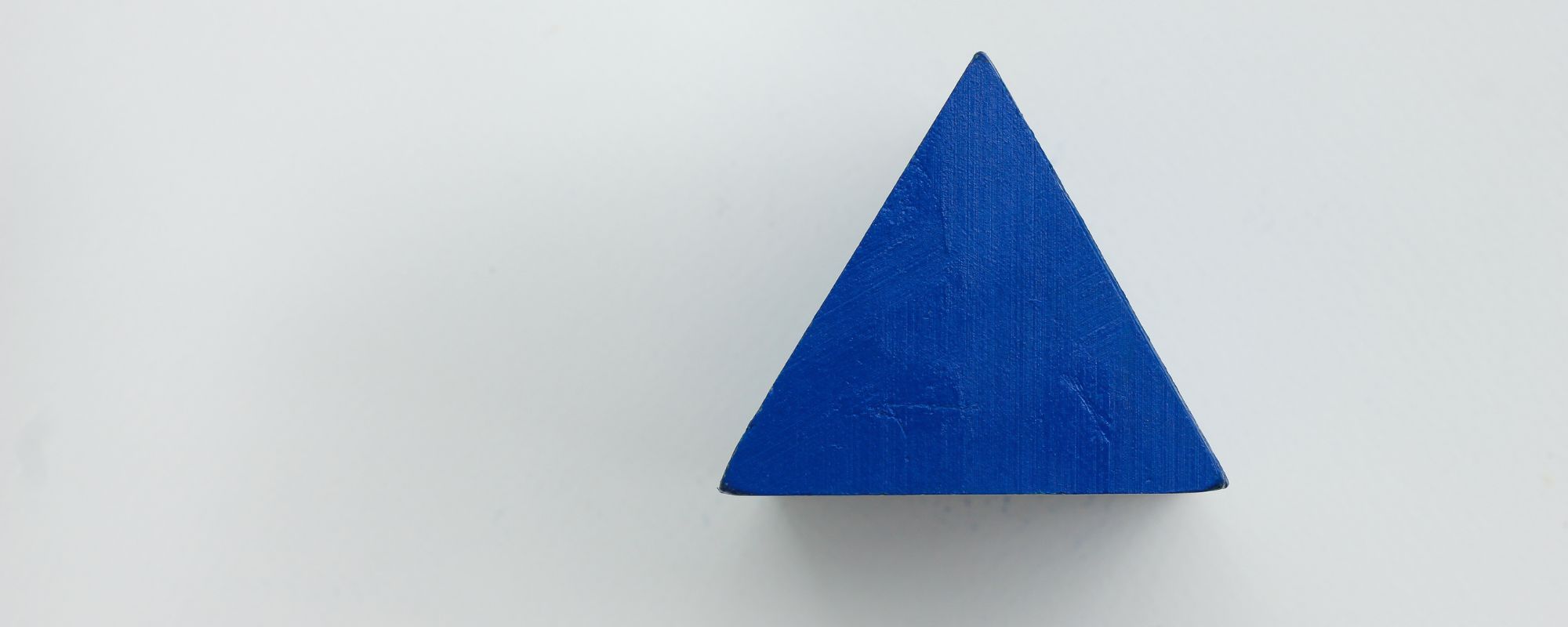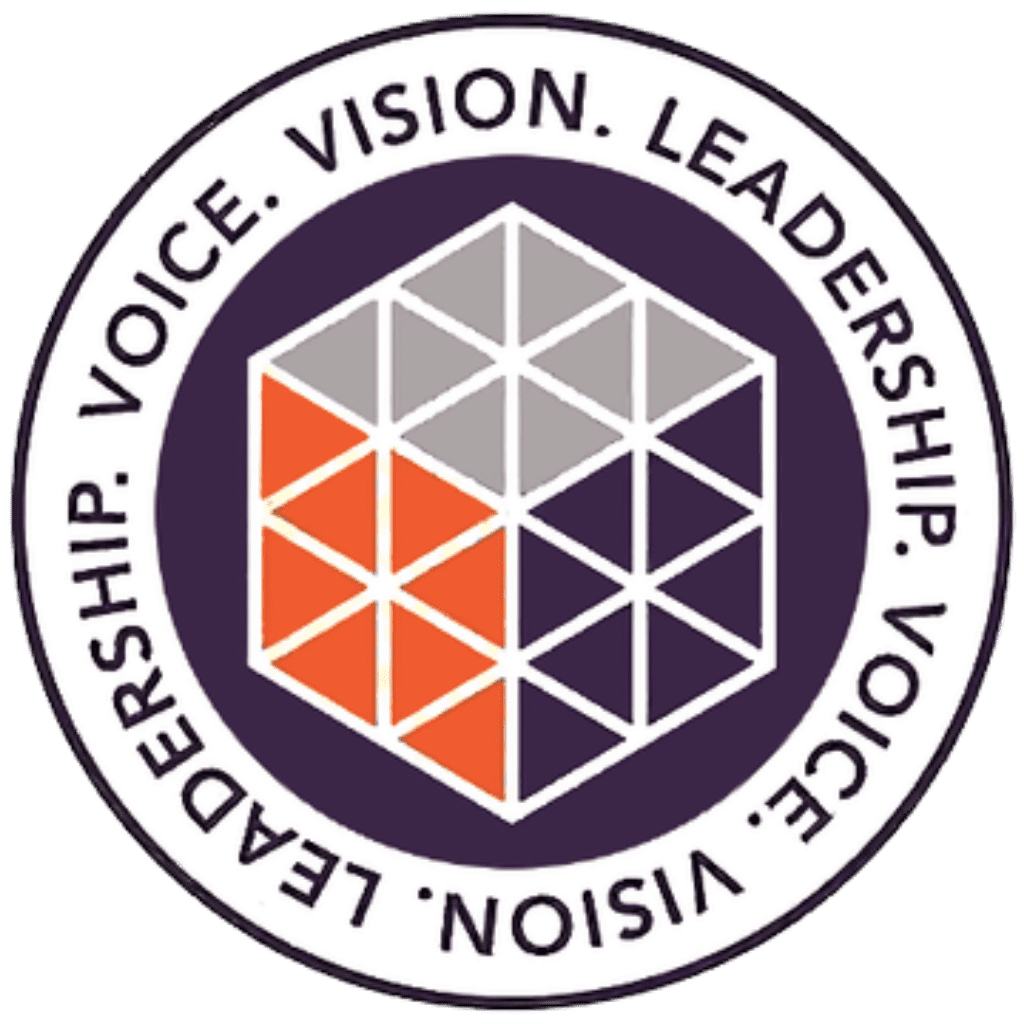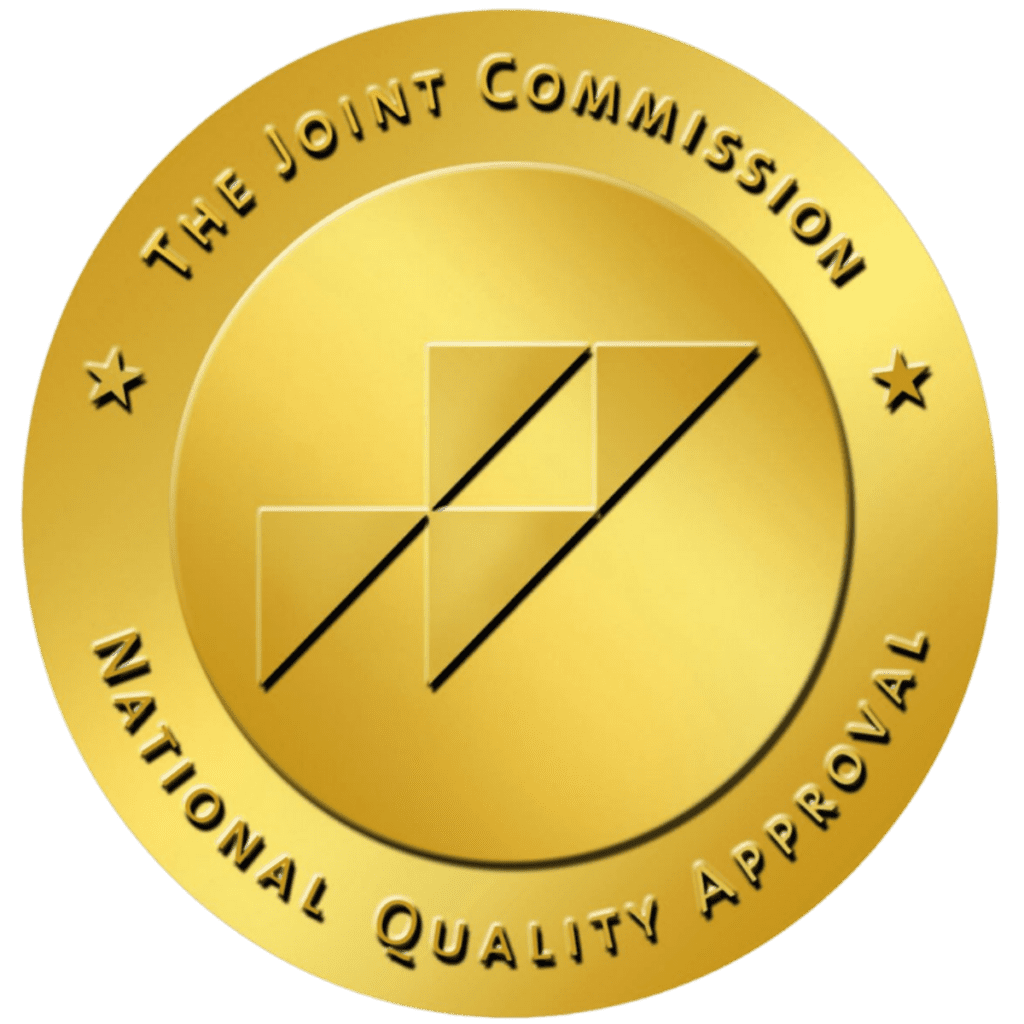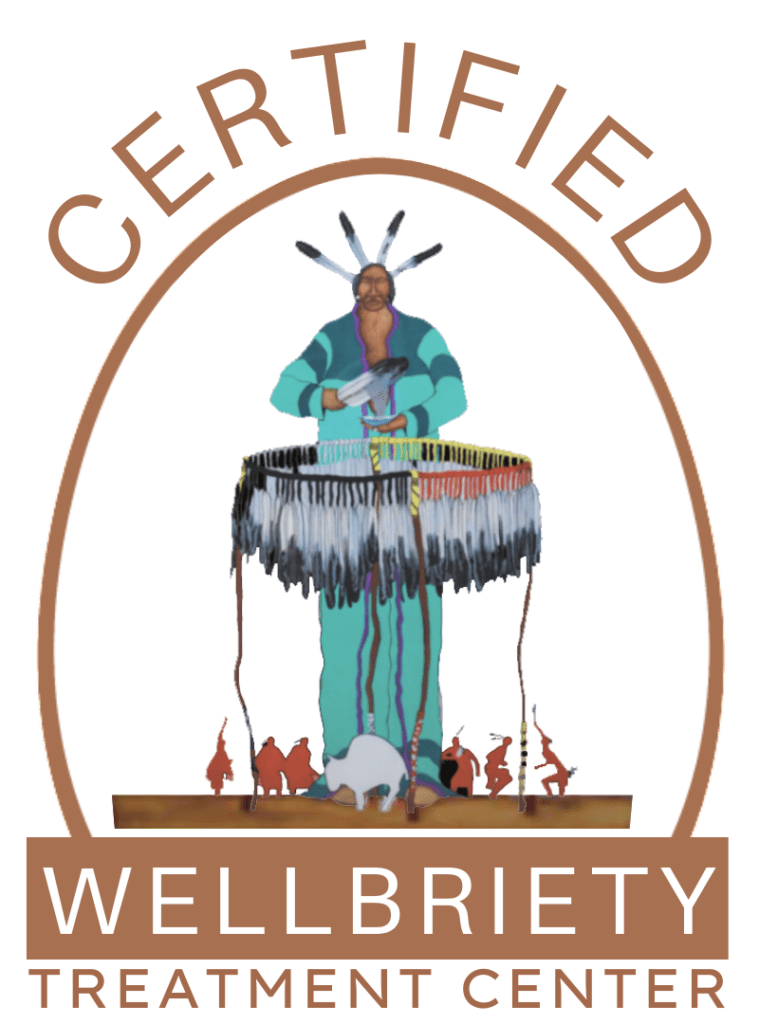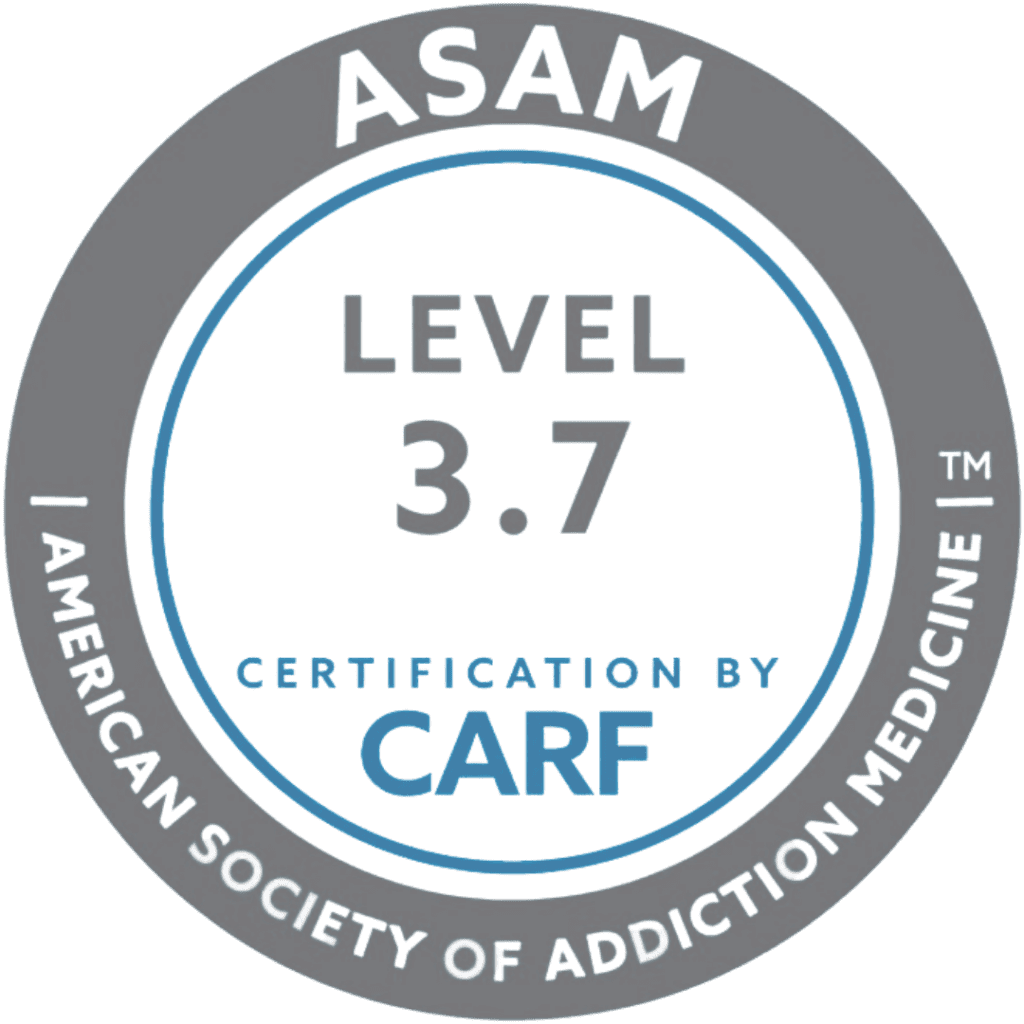The CBT triangle is a therapy technique for identifying unhealthy patterns in one’s life. Cognitive behavioral therapy (CBT) for mental health is a well-recognized treatment method. Individuals with mood disorders, behavioral disorders, substance disorders, and co-occurring issues can benefit from CBT. Essentially, this behavioral psychotherapy practice teaches individuals to reflect on their thoughts, feelings, and behaviors to see patterns. Once they identify their repetitive habits, they discuss whether they are healthy or not and learn to replace them with alternative patterns. Notably, cognitive behavioral therapy is effective for mental health issues, as it is one of the most used and most studied psychotherapies. Yet, you might feel nervous about starting CBT and have questions. Treat this article as a practical guide to CBT and the CBT triangle to better understand how it can help.
What Is Cognitive Behavioral Therapy (CBT)?
Cognitive behavioral therapy, or CBT, is a talk therapy that falls under behavioral therapy. It is an effective healing method for a variety of mood disorders, behavioral issues, trauma disorders, and mental health challenges. CBT originated in the 1960s and has been widely used in mental health treatment ever since. This evidence-based therapy is well studied and utilized in therapy settings, including at Aliya Health Group’s rehab centers. The basis of CBT is developing a clear understanding of your own patterns—of thinking, feeling, and acting. It stems from the Latin term that means “to recognize.” Cognitive behavioral therapy is used differently according to each client and their issues and needs. However, the same core principles are consistent across CBT and apply to all individual situations.
Main Principles of CBT
The main principles of cognitive behavioral therapy are thoughts, feelings, and behaviors. More elaborately, CBT focuses on the way one feels, the way thinks, and behaves. Thinking refers to patterns of thought that influence what people believe. Feelings refer to the way one feels about any given situation. Behaviors are the ways people respond to their situations based on their thoughts and feelings. Notably, CBT focuses on recognizing habits pertaining to these three principles. Then, the CBT method allows individuals to work towards new, healthy goals.
Connection Between Thoughts, Emotions, and Behavior
To continue, CBT maintains that there is a strong connection between one’s feelings, thoughts, and behaviors. In fact, unhealthy patterns exacerbate each area. CBT is customized to each individual, so it helps clients find connections between their own thoughts, feelings, and behaviors.
Changing Unhelpful Patterns of Thought
Crucially, cognitive behavioral therapy does not leave people in the understanding that they have unhealthy patterns. Instead, after helping them identify these habits, CBT teaches them how to change them. Growth and change are key components of CBT, so a willingness to adapt is important. Using CBT techniques like the CBT model, individuals learn the difference between their types of thoughts. For instance, they identify the difference between conscious thoughts, automatic thoughts, and schemas. Also, they learn how to regulate their behaviors using techniques like self-monitoring or role-playing.
Problem-Focused and Goal-Oriented
Notably, cognitive behavioral therapy has a goal-oriented focus. The aim is to teach individuals better self-awareness, understanding of others’ motivations, and new, healthy patterns. CBT works well when clients bring a base understanding of their unhelpful habits or issues. However, as long as the individual is open, therapy can work towards a deeper understanding.
What Is the CBT Triangle?
This guide aims to explain the CBT triangle. Take a look at the CBT triangle graphic below.
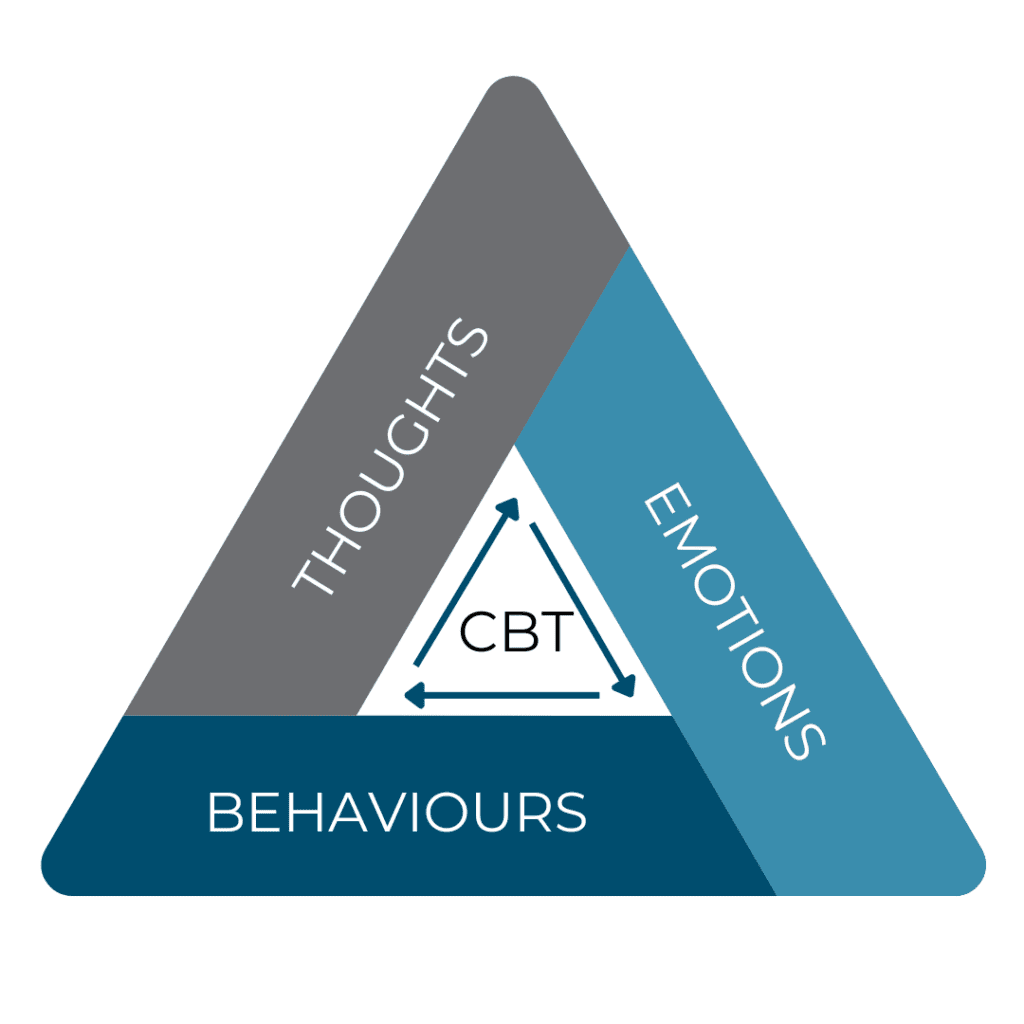
In essence, the CBT triangle is a model that believes the principles of CBT (thoughts, feelings, and actions) are interconnected. Further, it believes one leads to another in an endless cycle. For example, a person can feel rejected by someone. This can lead them to create an idea in their mind that they’re unworthy and must have done something wrong. As a result, they will behave in response to their belief and the feelings it incites in them, like shame or embarrassment. They may close themselves off or be the first to reject in the future to avoid the same situation. As evidenced, the CBT triangle can be a devastating cycle to remain trapped in.
Thoughts
The way you think is an important part of your sense of self. Also, your thoughts shape your view of the world, yourself, and others every day. Yet, psychotherapy believes that psychological problems can be at least partially due to unhelpful thinking patterns. For instance, if you have a mood disorder like depression, you likely have some disparaging views of the world or yourself. Commonly, individuals with depression struggle with their sense of self-worth and have trouble imagining a positive future for themselves. In CBT, you will identify such faulty ways of thinking. Then, the CBT thought triangle identifies how such thoughts can lead to negative outcomes in your life.
Emotions
It’s easy for your life to become run by your emotions, especially if you have a mental health disorder. When your emotions overwhelm you, they can exacerbate mental illness symptoms, disturb your sleep, and cause you to lean into destructive behavior patterns. This is shown by the CBT triangle, as each part of the self is connected. Thus, cognitive behavioral therapy helps you to identify your feelings. Often, people are confused about where their thinking stops and where their feeling starts. CBT utilizes techniques like journaling and mindfulness to help you understand how your thoughts influence your feelings and vice versa.
Behaviors
The way one behaves obviously plays a huge role in one’s life. Essentially, much of your wellness is shaped by how you act, including how you care for yourself and manage your responsibilities. It’s easy to slide into an unhealthy place in life due to taking the wrong actions that lead you there. The CBT triangle helps clients understand how their thoughts and emotions play a role in their behaviors. Additionally, behavioral therapists help their clients work towards goals by practicing healthy actions.
Get confidential help from our addiction and mental health treatment facilities located across the United States. Call to join one of our quality programs today!
Speak With Our Admissions TeamHow Does the CBT Triangle Establish Negative Patterns?
As mentioned, negative patterns can spiral into overall unwellness. Your thoughts, emotions, and behaviors are all closely linked when it comes to establishing patterns. You probably aren’t aware of many of the unhealthy habits you’ve developed and come to rely on. Often, these are developed during childhood and never challenged. Yet, operating within the CBT triangle creates a pattern of negativity that impacts your life.
Here is an example of a negative spiral of the CBT triangle:
Thought: “That person hasn’t responded to my message. They don’t like me anymore.”
Feeling: Anxiety, sadness, rejection, and/or guilt.
Behavior: Avoiding that person, losing the relationship, and withdrawing from social interactions.
How to Break the CBT Triangle Cycle
Undeniably, the CBT triangle is not a healthy loop in which to be trapped. It keeps individuals stuck within themselves, constantly perpetuating their own ideas and validating them based on their faulty belief system. As a result, people remain stuck repeating their patterns, often causing more and more damage in their lives. Since negative thoughts largely drive negative emotions and behaviors, it’s important to focus on breaking the thinking cycle. Often, thinking patterns are learned behaviors over time, but by using CBT techniques, it’s possible to reshape your mental habits. For example, the following steps are actions your therapist may walk you through during your CBT therapy sessions.
Identify Negative Thoughts
Firstly, it’s important to name negative thoughts. Taking a moment to realize that it was an unhealthy or toxic thought helps you center yourself in reality. Otherwise, your brain can lead you into a place of fantasy where you believe things that aren’t true. Some examples of negative thoughts are:
- They are mad at me
- I’m a failure
- I mess everything up
- They don’t like me
- I will never get better
- I’m not good enough
Thoughts like these incite emotional responses in you that then cause you to behave in ways that aren’t productive for your goals.
Challenge and Replace Negative Thoughts
Once you’ve identified that a thought comes from a negative or irrational place, you can begin to reshape it. Replacing unhealthy thoughts with healthy ones takes time. Yet, you can start the process by challenging your negative thinking patterns. For instance, your therapist will help teach you these steps in your sessions. Together, you may focus on one predominant thought that you wrestle with. Once you identify it as negative, they’ll help you spin it in a way that’s more logical, rational, and healthy. As an example, the thought they are mad at me can be challenged by thinking logically about the situation.
What happened to make you think that? Why is that your response? How likely is this thought? What other outcomes could just as likely be true?
As you chip away at the logic of the thought, you begin to replace it with healthier ideas.
Engage in Positive Actions
Next, CBT techniques encourage engaging in positive responses rather than self-destructive ones. Instead of isolating as a natural response to your emotions, you can be more open and reach out to others. Instead of overthinking a situation, you can take a walk or engage in an activity. Instead of ignoring your feelings, you can journal or talk to a friend. The more you pivot towards positive actions, the more this will become a habit.
Acknowledge and Process Your Feelings
In behavioral therapy, it’s important you acknowledge your feelings. Rather than shoving them under the rug in an effort to replace them, you first identify and acknowledge them. Then, you can set them aside for healthier alternatives. But feelings are valid and lead back to important root belief systems you hold. In cognitive behavioral therapy, you have a safe space and a trustworthy person to unpack and process your feelings with. They won’t let you stay in a negative place but will instead help you create better habits.
Looking for quality treatment for substance abuse and mental health that’s also affordable? Aliya Health Group's treatment facilities accept most major insurance providers. Get a free insurance benefits check now!
Check Your CoverageFinding CBT for Mental Health and Addiction Near Me
CBT for mental health has many concrete benefits. This is evidenced through the way the negative patterns of the CBT triangle are identified and overcome. If cognitive behavioral therapy sounds like a program that would positively influence your life, you don’t have to look far. Our treatment centers through Aliya Health Group offer CBT as part of our comprehensive approach to recovery.
CBT can help with a variety of mental health, behavioral health, and substance abuse issues, such as:
- Alcohol addiction
- Stress management
- Emotional regulation
- Controlling negative thought patterns
- Anger management
- Post-traumatic stress disorder
- Eating disorder
- Depression and anxiety
- Suicide prevention
We can help you find a location near you, understand how to use your insurance for therapy, and get you registered at one of our facilities. Simply reach out today if you’re ready to leave the negative patterns of mental illness in the past. Soon, you will be stepping into a healthy, fulfilling future!



